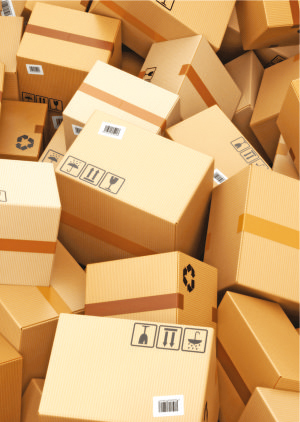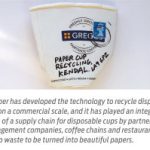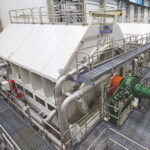The mega projects announced recently by JK Paper, Emami, and Naini will add at least 500,000 tonnes of packaging board capacity in premium category, thus matching the pace of forecasted double-digit growth in packaging paper and board, where the demand is slated to reach at 9.7 million tonnes by FY19 growing at CAGR 8.9 percent. APP’s plan to add about 1.4 million of packaging capacity in AP if takes off, the production figures of the segment would be even closer to the actual or projected demand.
 Close to double-digit demand growth in packaging paper and board segment was consolidated, to some extent, by the addition of over a million tonne high-end capacity (SBB, SBS, high-end duplex, etc.) by top 5-6 players alone in the last 4-5 years. All along, medium and small sized mill have been adding significant capacities on the kraft paper front to offset the increasing demand. The momentum is to continue awhile and the mega projects announced recently by JK Paper, Emami, and Naini will add at least 500,000 tonnes of packaging board capacity in premium category, somewhat matching the pace of forecasted double-digit growth in packaging paper and board, where the demand is slated to reach at 9.7 million tonnes by FY19 growing at CAGR 8.9 percent as per a study. APP’s plan of about 1.4 million tonne mammoth project in Andhra Pradesh, if realized, will add fillip to bridging the demand-supply gap in remarkably small time frame.
Close to double-digit demand growth in packaging paper and board segment was consolidated, to some extent, by the addition of over a million tonne high-end capacity (SBB, SBS, high-end duplex, etc.) by top 5-6 players alone in the last 4-5 years. All along, medium and small sized mill have been adding significant capacities on the kraft paper front to offset the increasing demand. The momentum is to continue awhile and the mega projects announced recently by JK Paper, Emami, and Naini will add at least 500,000 tonnes of packaging board capacity in premium category, somewhat matching the pace of forecasted double-digit growth in packaging paper and board, where the demand is slated to reach at 9.7 million tonnes by FY19 growing at CAGR 8.9 percent as per a study. APP’s plan of about 1.4 million tonne mammoth project in Andhra Pradesh, if realized, will add fillip to bridging the demand-supply gap in remarkably small time frame.
Close to double-digit demand growth in packaging paper and board segment was consolidated, to some extent, by the addition of over a million tonne high-end capacity (SBB, SBS, high-end duplex, etc.) by top 5-6 players alone in the last 4-5 years.
Packaging Paper and Board Growth: More Than It Looks Like
In recent 5-7 years, the overall demand growth and growth in actual production have hardly been covered exhaustively by various official data and figures shown by various research agencies. Nevertheless, considering their stand, the actual production of the Indian paper industry in FY18 stands roughly at over 16 million tonnes, 4 percent of global 400 million tonnes. Many will contest this figure and peg it at a higher number with their tentative data! Seeing the segment-wise movement, packaging paper and board, growing with highest CAGR, contributes roughly 50 percent of the total production, standing at over 8 million tonnes for FY18.
If we closely inspect the official or widely-accepted figures, the demand movement of packaging paper and board segment, though highest, is not a double-digit as claimed by many industry insiders. As per one prominent research agency, demand for packaging paper and board segment is expected to grow at a CAGR of 8.9 percent and reach 9.7 million tonnes in FY19, which actually means that the actual demand in FY18 must be pegged at 8.89 million tonnes. Consequently, with an actual production of over 8 million tonnes, there is a demand-supply gap of about 0.9 million tonnes, which is another paradox if we take the creation of over a million tonne demand annually in the packaging paper and board segment growing with a double-digit CAGR (as is the general perception, and which seems valid too), roughly in the range of 12-15 percent.
Why this disagreement? The cause of the duel or contradiction in the estimates is mainly because the sample of the study is not extensive and doesn’t cover the actual production figures and capacity additions of many mills and clusters. As is known, in the packaging paper and board segment, the large players focus usually on the high value added packaging paper and boards such as FBB, SBB etc., while the smaller companies address low value added segments such as kraft paper and board.
In recent 5-7 years, the overall demand growth and growth in actual production have hardly been covered exhaustively by various official data and figures shown by various research agencies.
Essentially, the packaging paper and board segment is witnessing the fastest growth figures, both in terms of demand and capacity creation, more probably at a double-digit. However, to corroborate this double-digit CAGR, we have to canvass exhaustively all small and medium-sized mills making low-end board and karft paper, apart from big mills producing high-end packaging boards, because both demand and production figures appear to be brisk and vigorous towards the lower-end of the segment. Also because, the Indian market has only recently started showing its preferences toward packaging, and the orientation is more toward quantity than quality. Having said that, the growth in the high-end packaging can’t be discounted and is even brisker than the lower-end!
Recent Capacities: Displaying Remarkable Growth
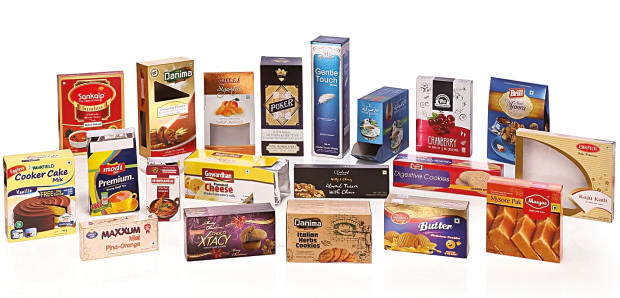
In the last 5 years, the high-end packaging board has seen some 1 million tonne capacity addition led by the giants of the Indian paper industry, viz. ITC, TNPL, Emami, Century, and few others. Karft paper and board segment too witnessed a swift capacity addition, much more than in the high-end board and value-added duplex board variety. As per the available figures, for the overall packaging paper and board segment, growing at CAGR 8.9 percent, the demand is expected to reach 9.7 million tonnes in FY19. Standing at actual production of over 8 million tonnes today and with recent mega projects worth over 500,000 tonnes announced by JK Paper, Emami, and Naini along with ongoing fast capacity additions in small and medium-sized karft and duplex board mills, the demand-supply gap is going to be minimized much beyond what it’s now. Besides, if the initial reports of APP setting up close to 1.4 million tonnes (of packaging grade capacity in Andhra Pradesh in the next 2.5 years) is to be believed, the total packaging segment capacity in India would realize a never-seen-before height and the demand-supply gap would drop down drastically to a manageable level.
The cause of the duel or contradiction in the estimates is mainly because the sample of the study is not extensive and doesn’t cover the actual production figures and capacity additions of many mills and clusters
Moreover, if we work these figures (as reported by various market research agencies) on the premise that actual production in India is always lower than the actual demand, the figure of total expected demand in FY19, viz. 9.7 million tonnes is again a bit lopsided or erroneous as the actual production even now seems to be way beyond the projected demand. Roughly 60 percent of the production within the packaging paper and kraft segment is contributed by kraft mills or low-end packaging product manufacturers, which comes to be around 5.8 million tonnes of overall 9.7 million tonnes demand. If we consider two large kraft producing clusters, such as Morbi-Vapi in Gujarat and Meerut-Muzaffarnagar in UP, the production easily crosses 5 million tonnes (based on Paper Mart’s own calculation and corroborated by leading mills in these areas), which glaringly questions the expected demand figure.
Essentially, the packaging paper and board segment is witnessing the fastest growth figures, both in terms of demand and capacity creation, more probably at a double-digit.
Matter-of-factly, the expected demand, actual demand, actual production, and CAGR, all are on the higher side than what appears in most of the research and surveys. The figures on the higher-end packaging side seems commensurate with or close to the actual ground figures as the data collection is easy with large mills (which are few and wide), for instance, the demand of board to be around 4 million tonne out of 9.7 million tonne in FY19.
Growth Driving Factors: Unceasing and To Gain Further Momentum
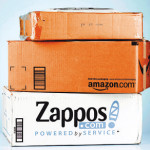 Packaging segment and its growth have given the Indian paper industry much needed breather when the growth was slackening on account of W&P and newsprint facing severe growth rate retardation in the past. A number of factors such as increased urbanization, requirement of better quality packaging of FMCG products marketed through organized retail, and increasing preference for ready-to-eat foods have catapulted the growth of the paper packaging segment to what it is now.
Packaging segment and its growth have given the Indian paper industry much needed breather when the growth was slackening on account of W&P and newsprint facing severe growth rate retardation in the past. A number of factors such as increased urbanization, requirement of better quality packaging of FMCG products marketed through organized retail, and increasing preference for ready-to-eat foods have catapulted the growth of the paper packaging segment to what it is now.
The new sustainability driven approach to adopt products which are leaving the least environmental footprint has given yet another push to paper-based packaging. Greener planet and the concept of eco-friendliness is now inspiring people and businesses alike to give a fresh look at the paper, which till recent times faced mordant criticism on account of being anti-forest, which was not true at all. The consumer companies are now increasingly replacing their hazardous packaging alternatives with paper-based packaging. This trend is to give tremendous marketing edge to the paper-based packaging in times to come.
The figure of total expected demand in FY19, viz. 9.7 million tonnes is again a bit lopsided or erroneous as the actual production even now seems to be way beyond the projected demand.
 Online and off-line retail marketing popularized the concept of distance-shopping, which warranted the safety precautions for the good to be sold, bought and transported at distance, and which necessitated the use of packaging, mostly paper based. Moreover, e-Commerce has organised the retail market substantially, which also is reason to adopt uniform and standard packaging practices giving a fillip to packaging requirements. It will further increase!
Online and off-line retail marketing popularized the concept of distance-shopping, which warranted the safety precautions for the good to be sold, bought and transported at distance, and which necessitated the use of packaging, mostly paper based. Moreover, e-Commerce has organised the retail market substantially, which also is reason to adopt uniform and standard packaging practices giving a fillip to packaging requirements. It will further increase!
Matter-of-factly, the expected demand, actual demand, actual production, and CAGR, all are on the higher side than what appears in most of the research and surveys.
The e-commerce space in India, over the last few years, has grown undoubtedly, it is yet to achieve the potential as has happened in other countries and there is immense unexploited potential. Digital literacy and internet penetration is yet to reach its optimum and the market opportunities is yet to be capitalized. For instance, the e-retail market in China is 40x the size of the e-retail market in India.
A number of factors such as increased urbanization, requirement of better quality packaging of FmCG products marketed through organized retail, and increasing preference for ready-to-eat foods have catapulted the growth of the paper packaging segment to what it is now.


